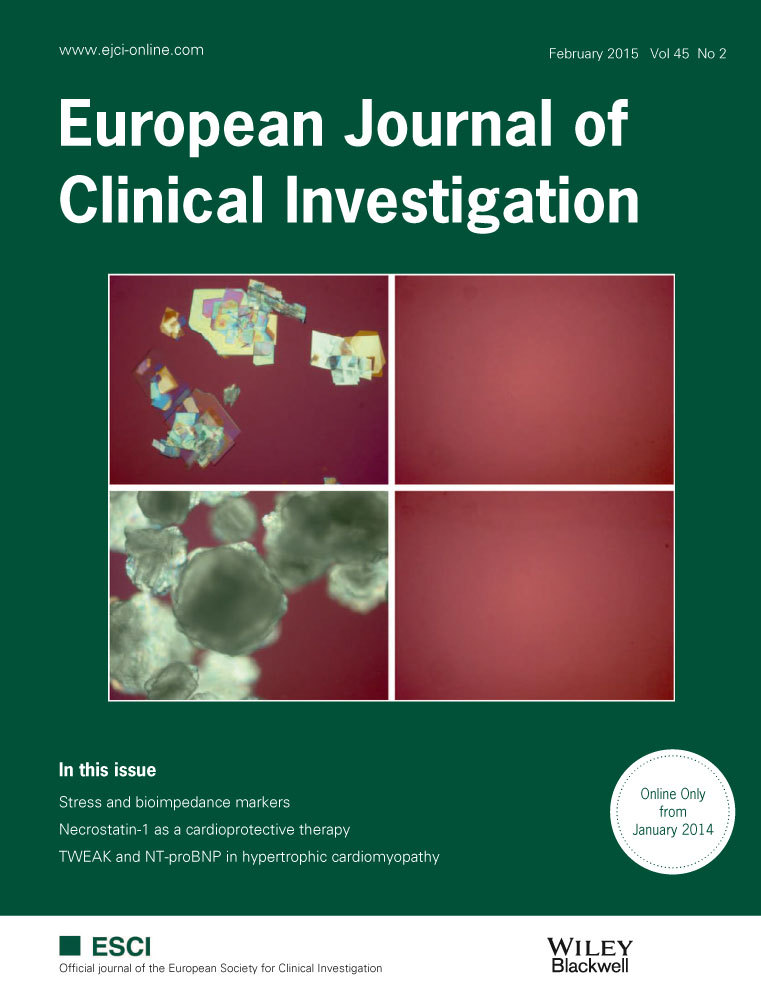TLR4 and NALP3 inflammasome in the development of endothelial dysfunction in uraemia
Abstract
Background
The increased cardiovascular risk present in chronic kidney disease (CKD) is related to the development of endothelial dysfunction, whose mechanisms are still unclear. Accumulation of toxins and proinflammatory cytokines may constitute danger-associated molecular patterns (DAMP) to which endothelial cells are continuously exposed. Potential involvement of mechanisms recognizing DAMP, such as TLR and inflammasomes, has been explored.
Materials and methods
Endothelial cells in culture were exposed to sera samples collected from patients with CKD: (i) stages 4–5 not on dialysis (PreD), (ii) on maintenance haemodialysis (HD) and (iii) peritoneal dialysis (PD). Changes in TLR4 and ICAM-1 expression, reactive oxygen species (ROS) production and TLR4 signalling were explored. Assembly of NALP3 inflammasome components was also investigated.
Results
TLR4 was expressed at the cell surface and increased significantly in response to PreD, HD and PD sera, paralleling with the activation of the cell stress protein Akt and the inflammation-related transcription factor NFκB, with elevated surface ICAM-1 expression and ROS production. TLR4 blockade partially decreased these effects. Exposure of cells to uraemic sera induced assembly of NALP3 components, with caspase-1 activation, especially in response to HD and PD sera.
Conclusions
TLR4 and NALP3 inflammasomes, crucial elements of innate immunity, contribute to the development and perpetuation of endothelial dysfunction in response to the uraemic toxicity. These mechanisms constitute potential therapeutic targets to improve endothelial dysfunction and to reduce the increased cardiovascular risk in CKD.




